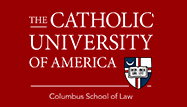Abstract
The financial crisis of 2008 led Congress to enact the Dodd-Frank Wall Street Reform and Consumer Protection Act and establish the Consumer Financial Protection Bureau (CFPB) to better protect consumers. Although Dodd-Frank and the CFPB introduced sweeping changes to many areas of financial lending, automobile dealers and financers were expressly excluded from oversight by the CFPB. Despite this express limitation on the CFPB’s authority, the Bureau nonetheless expanded its definition of “larger participants” to encompass automobile dealers and financiers. This action has resulted in duplicative regulatory oversight and increased costs to consumers, which in turn, imposes additional burdens on those borrowers who need vehicles to obtain and retain gainful employment.
This Comment discusses the statutory and economic history behind Dodd-Frank, the CFPB, and other government regulators charged with oversight of consumer financial markets. In examining Dodd-Frank and the CFPB, this Comment addresses the subprime automobile financing industry, predatory lending practices, and consumer behavior, and challenges the CFPB’s attempt to regulate the automotive finance market. This Comment argues that the CFPB’s oversight in automotive finance market imposes additional, unnecessary costs which are passed on to consumers. Finally, this Comment argues that the fear of another “bubble” in the automotive market is unrealistic, and, consequently, cannot serve as the basis for the CFPB’s oversight in a market which was expressly excluded in Dodd-Frank.
Recommended Citation
Chris O'Brien,
The CFPB’s Endaround,
67
Cath. U. L. Rev.
365
(2018).
Available at:
https://scholarship.law.edu/lawreview/vol67/iss2/9
Included in
Accounting Law Commons, Banking and Finance Law Commons, Commercial Law Commons, Consumer Protection Law Commons



